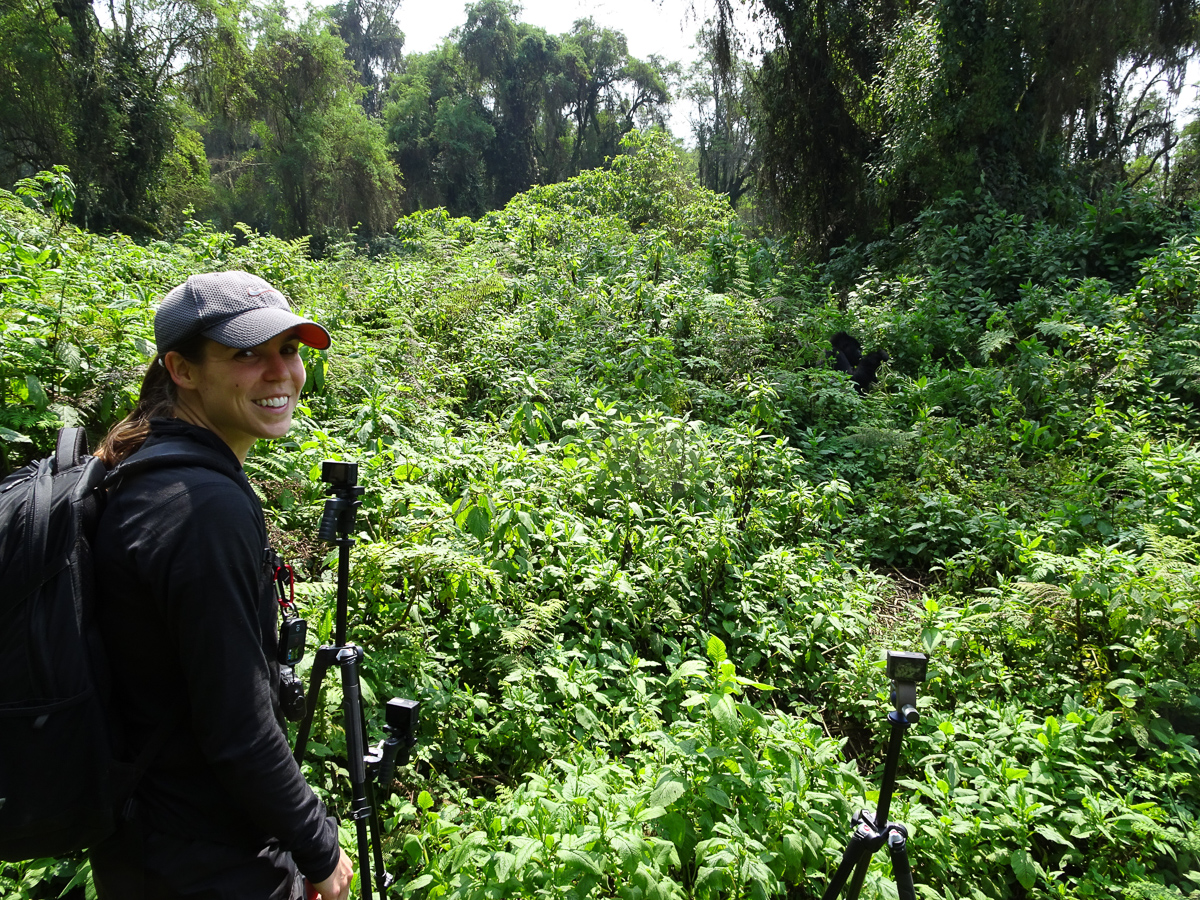Grantee Spotlight
Kelly Ostrofsky is a postdoctoral teaching fellow at the New York Institute of Technology College of Osteopathic Medicine. She was awarded a Leakey Foundation Research Grant in our fall 2016 cycle for her project entitled “Comparing vertical climbing and suspension in wild African apes.”

By Kelly Ostrofsky
The locomotion of our early ancestors has long been a topic of debate among researchers, even as we continue to find new fossils of early hominins. The lack of consensus is largely due to disagreement about functional interpretations of ape-like morphologies. As our closest living relatives, the African apes provide an important comparative context for interpreting locomotor evolution in our fossil relatives. However, we do not have detailed information on the way some of the African apes, particularly gorillas, move around their diverse habitats. Additionally, kinematic studies (quantitative, video-based analysis of motion) of African ape locomotion are largely limited to zoos, laboratories, and other captive settings, and are nonexistent from wild populations.

My research aims to begin filling these gaps by more comprehensively characterizing locomotor differences between the African apes. I will spend several months in the field, studying wild populations of mountain gorillas at Bwindi Impenetrable National Park, Uganda and Volcanoes National Park, Rwanda, as well as chimpanzees at Gombe Stream National Park, Tanzania. The first major objective is to collect more detailed information on the positional behavior of mountain gorillas. By using fine-grained categories that correspond to different ways the skeleton bears weight, we can better address questions about specific locomotor behaviors, such as vertical climbing and suspension, and how this might be related to morphological variation across species.
The second major objective is to quantitatively characterize the limb joint postures used during vertical climbing and suspensory behaviors in these wild populations. This will be the first to provide kinematic data on mountain gorillas, and the first 3D kinematic data on any ape in the wild. Even for species for which it has been possible to conduct kinematic studies in captivity, collecting such data in natural environments offers unique value, as captive settings often lack the natural and variable substrates that are available and used by primates in the wild. For 3D kinematics, I will be collecting video with multiple synchronized cameras, which can then be used to extract 3D coordinate data from anatomical landmarks. These data can then be analyzed to compare how limb movement and joint postures differ between mountain gorillas and chimpanzees.

A comparison between mountain gorillas and chimpanzees will provide insight into climbing and suspensory adaptations in closely related great ape species. By combining positional behavior and kinematics, this project will provide a better characterization of African ape locomotion, helping to contextualize the morphological variation seen in extant apes, and improving our ability to make inferences from skeletal morphology in the ape and human fossil record.



